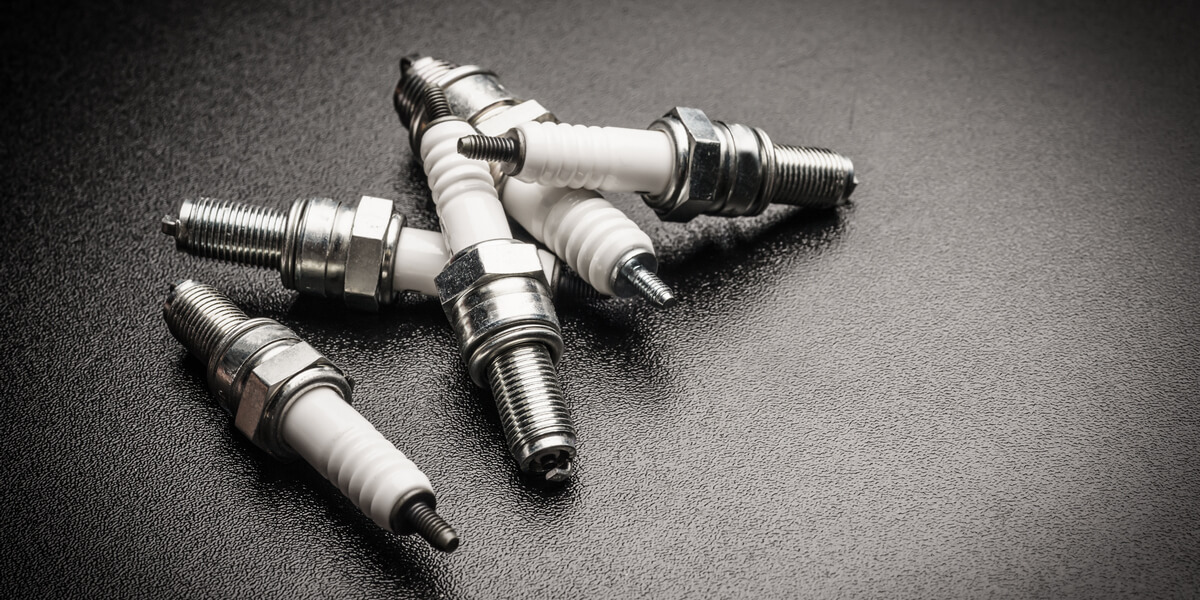
Internal combustion engines are one of the most impressive machines when it comes to engineering. Even the simplest engine in the world works in tight tolerances and timings. Every part of an engine should always be at the right place, at the right time. The best example of this is spark plugs, which are used in every single petrol engine ever made.
Spark plugs ignite the air-fuel mixture in the cylinders of a gasoline engine. They are designed to do that at a specific moment after the air-fuel mixture has been compressed in the combustion chambers by the pistons. The importance of using the correct plugs is even more critical in direct-injection engines, where air and fuel mix directly in the chamber.
If there are no plugs in the engine or if the plugs are faulty, it might stall or refuse to start. To put it simply, there is no better way to ignite the mixture in gasoline-powered engines. Diesel motors, on the other hand, ignite the air-fuel mixture using self-ignition caused by a higher level of compression instead. When a gas is compressed, its temperature rises. Diesel engines compress the air-fuel mixture so much that it ignites by itself, without the need for a spark. Still, if you live in North America, chances are you own a gas vehicle – and even hybrid engines are equipped with spark plugs.
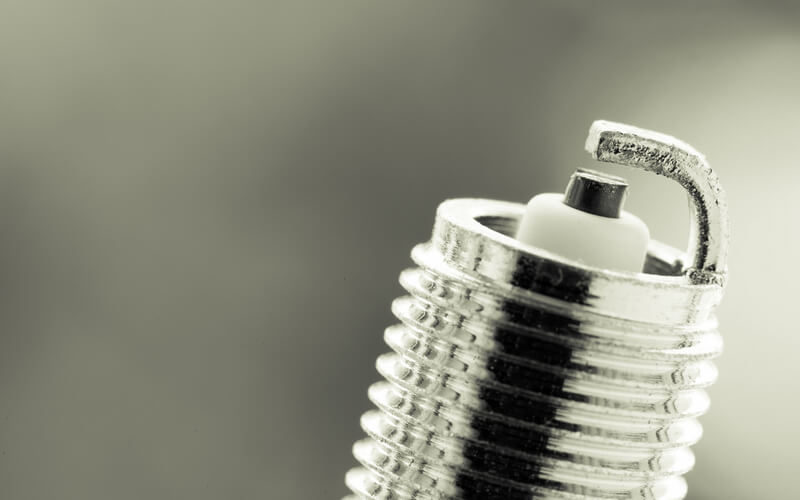
But what do spark plugs do, and how do they work? To answer that question, it's easier to first how internal combustion engines and its cycles work.
Internal Combustion Engine Cycles
Most modern engines complete the compression and expansion with four strokes. The spark plugs play a critical role in the third stroke by igniting the air-fuel mixture at the exact right moment.
Here is how it all works:
- Intake: in this cycle, the piston goes into downward motion. By doing that, it sucks air from the intake valve. In older engines (carburetor or electronic injection), the air mixes with the gasoline within the intake manifold, before entering the combustion chamber. In direct-injection engines, however, the fuel mixes with the air in the compression stroke.
- Compression: in this cycle, the piston goes into upward motion. When it does that, it compresses the air-fuel mixture (or only the air). In direct-injection engines, the injectors spray the right amount of fuel directly in the combustion chambers to create a stoichiometric air-fuel ratio. "Stoichiometric" is nothing more than a fancy word meaning " the right ratio". In this case, the right ration is 14.7 part of air for 1 part of fuel. The air-fuel ratio is crucial for the correct operation of the engine. Too rich, it will flood the plugs and the engine will die out. Too lean, the mixture will simply not ignite and the engine will stall.
- Ignition: This is the cycle where the spark plugs play a crucial role. Just when the piston is getting ready to go into downward motion again, the spark plug ignites the mixture. The explosion created by the combustion of the air-fuel mixture will push the piston downward with incredible force. This is the only stroke that creates mechanical work – that’s how essential the spark plugs are.
- Exhaust: in this cycle, the piston goes back into upward motion, pushing the exhaust gasses out of the combustion chamber and into the exhaust manifold.
And it starts over again making the crankshaft rotate, ultimately driving the transmission and the driveshafts.
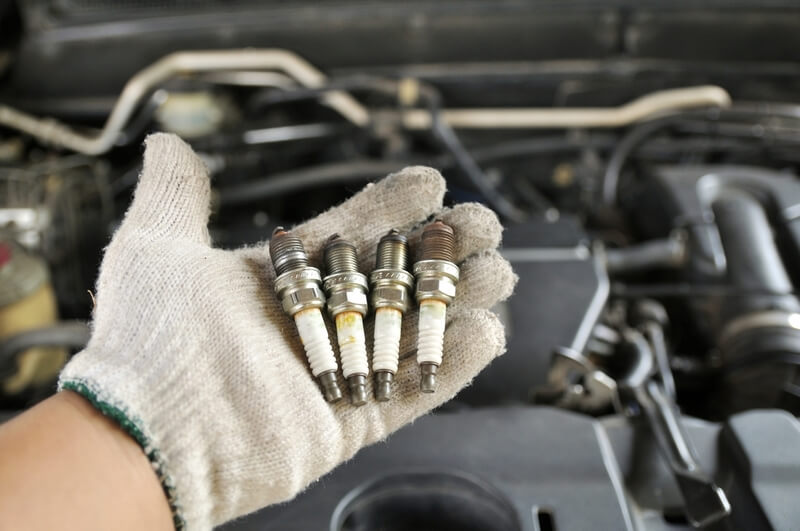
Two-stroke engines are completely different, though. They use only compression and exhaust cycles. In two-stroke gasoline engines, the spark plug ignites the fuel on the second stroke.
How Does a Spark Plug Work?
Spark plugs work using high-voltage electricity. They get the electricity directly from the ignition coil, which transforms the low-voltage that comes from the alternator into high-voltage electricity. The high voltage is crucial for creating a spark strong enough to ignite the air-fuel mixture inside the combustion chamber.
The spark plug itself consists of a center electrode (the cathode) and side electrode (the anode) at one end, while a small gap separates them. This is where the “magic” happens or in other words, where the plugs create a spark.
On the other end, the spark plug has a connector. This is where the spark plug connects to the wires that come from the ignition coil and receives electricity. In-between, the hex head serves for tightening the plug into place or loosening it in case of removal. Spark plugs also have a gasket for secure seal as the compression an engine creates can be very high.
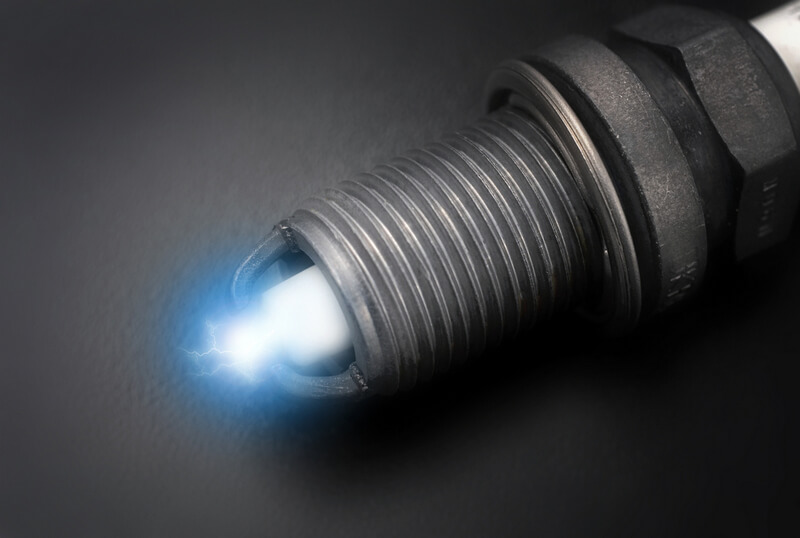
Low-voltage electricity can’t flow through gasses, like the surrounding air-fuel mixture, for example. When the voltage in the electrical system is too low, the plugs can’t create a spark. That’s why the plugs must always get high voltage from the ignition coil.
When high voltage runs through the system, the electricity exceeds the dielectric strength (insulation) of the mixture. Then, the surrounding gas ionizes and becomes a conductor of electricity. When that happens, an electric charge jumps from the cathode to the anode, creating a thunder-like spark.
The spark then ignites the air-fuel mixture into laminar combustion, raising the temperature and pressure in the combustion chamber, ultimately pushing the piston downward.
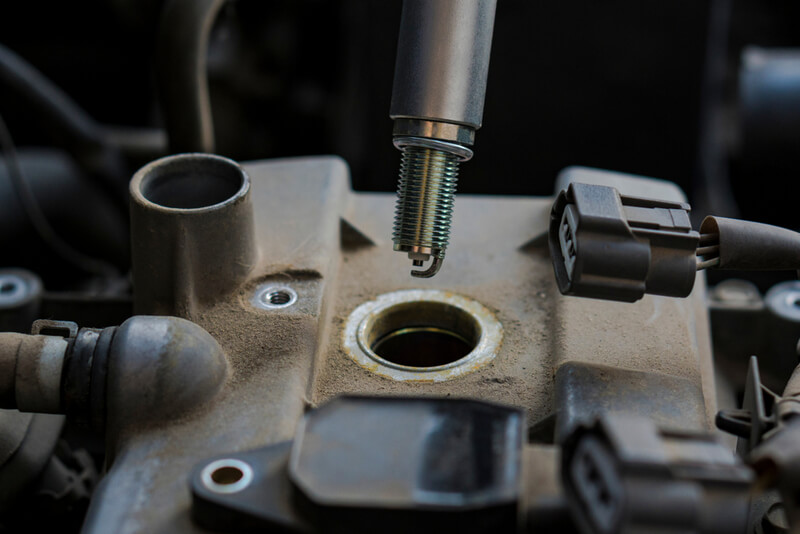
On hemispherical engines, the spark plugs sit at the highest point of the combustion chambers; engineers use this position to create a swirl of combusted mixture pushing downwards with an equal force on all sides. This not only pushes the piston stronger, but it also creates a more even combustion.
What’s the Difference Between Hot and Cold Plugs?
Apart from creating a spark igniting the fuel, plugs also serve as heat dissipators. This is another essential feature. If a spark plug doesn’t dissipate the heat from the chamber to another component, the electrode and anode will quickly reach scorching temperatures. When that happens, the fuel might begin to self-ignite when coming in contact with the cylinder walls and combustion chambers. This could cause misfires and damage expensive internal parts. That’s why we strongly recommend choosing plugs with the heat dissipation rating recommended for your engine.
Hot spark plugs are used on standard passenger car engines. They don’t dissipate heat as quickly as cold plugs and stay warmer. Due to the lower compression rations of common engines, the temperature easily stays within a specific threshold and hot plugs do the job just fine. On top of that, a hotter cathode and anode can help burning carbon deposits, keeping the combustion chamber cleaner.
Cold plugs, on the other hand, are used mostly on sports cars' engines. On high-performance models, the higher compression level creates a lot more heat and the risk of self-ignition is significantly increased. Using hot plugs on high-horsepower engines can be dangerous, to say the least. Fortunately, cold plugs have excellent heat dissipation properties, which makes them a better choice for use in these circumstances.
How Many Spark Plugs Do I Need?
The number of spark plugs is often the same as the number of cylinders in your engine. This means that four-cylinder engines need four plugs, inline-6, and V6 engines need six plugs, etc.
However, car manufacturers may decide to use other spark plug configurations for various reasons. Spark plugs placed on the side of combustion chambers were a common occurrence only a couple of decades ago.
Dual-ignition systems, using two spark plugs by cylinder were also installed on some rare truck and car models. Alfa Romeo was a pioneer with this technology, but others followed suit. 1989 Ford Ranger, 1991 2.3L Mustangs and even recent Dodge Hemi powerplant, just to name a few.
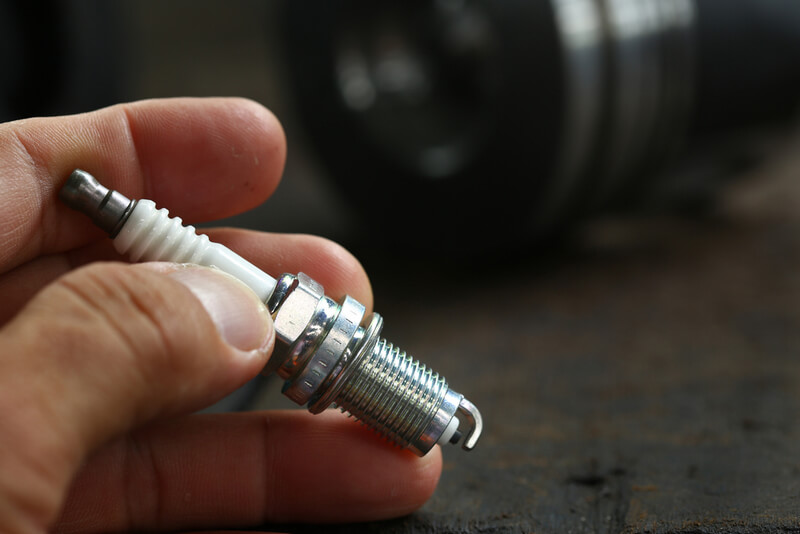
What Spark Plugs are Best?
Most often than not, the more you pay for spark plugs, the better they get. Cheap plugs use copper center and side electrodes. Copper has excellent heat-dissipation properties, which makes these plugs usable in high-horsepower engines too. However, these models tend to have a very short lifespan.
Expensive plugs benefit from the use of metals such as iridium and platinum, which significantly improve their performance. If you own a modern vehicle, we strongly recommend choosing iridium models. This dense metal is harder and stronger than platinum and has a higher melting point. Iridium plugs not only create a better spark, but also run colder and last longer.
However, as a general rule, selecting the manufacturer's recommended spark plug model is often your best bet. Engineers run thousands of tests to determine which spark plug is the best for your car based on lifespan, cost, and performance. Unless you plan on modifying your engine, the recommended plugs are usually the best option.
How Much Do Spark Plugs Cost?
They range from $10-$100 depending on the make and materials. Usually, older engines work well with cheaper spark plugs, while modern engines will require more expensive spark plugs. Please note that installing super-expensive models on your old engine won’t improve its power.
